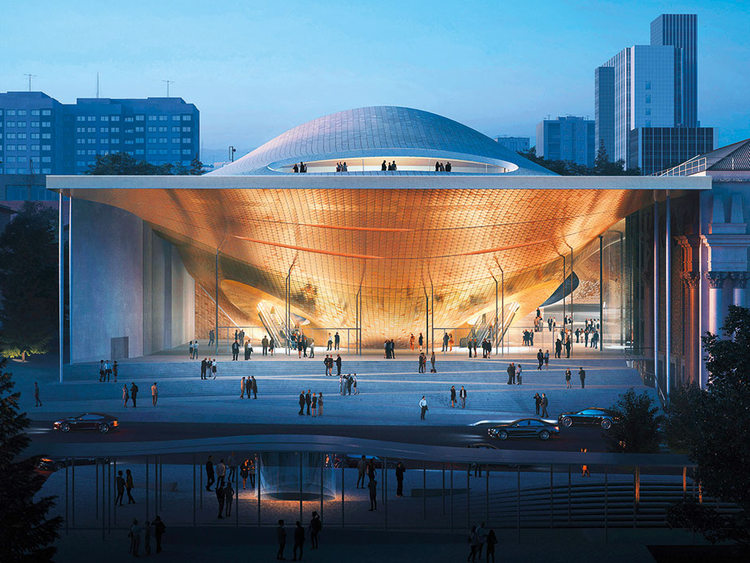It takes a very deft hand to bring these seemingly diverse creative expressions together. These exciting new projects achieve that harmony effortlessly.
V&A Dundee, Scotland
Considered by many as the quintessential Japanese architect of today, Kengo Kuma is the genius behind the newly opened V&A Dundee, Scotland’s first design museum. “A conversation between nature and artefact” stated the architect himself, who designed the museum to function as a continuous structure, developed into two inverted pyramids conjoined at the top level coupled with its twisted and folded geometry of double curved walls making it look like a jagged sea cliff.
In order to achieve the random, weathered look of a cliff face, engineers devised a way to hook on the 2,500 pre-cast rough stone panels onto the main concrete facade and new 3D modelling tools were developed to create the unique shape of the museum, with a lot of scripting going into the final shape of the building as factors such as how the human eye searches for patterns coming into play. Concrete samples were looked at in the hundreds, and environmentally friendly materials such as pulverised ash were used to achieve the desired shade. The museum was designed to be robust enough to withstand the extreme weather conditions of the Firth of Tay
“Natural materials and new technology should be friends. If we can combine both we can bring nature to big cities,” said Kuma who is set to build the Tokyo 2020 Olympic Stadium as well.
Poem Pavilion, Expo 2020 Dubai
A performative structure utilising artificial intelligence to write poems, the Poem Pavilion is set to be the UK Pavilion for the Dubai Expo 2020. Es Devlin says the design was inspired by one of Stephen Hawking’s final projects, a global competition inviting people to create digital messages that would represent humanity if we were to encounter other advanced civilisations through space.
The 20-metre high cone-shaped pavilion will be made of rows of protruding slats that extend outwards from one central point which will form a circular façade with poems that are lit up in LED scrolling across it. Devlin hopes that the experience of entering the interior space will be one that is much like entering the resonating chamber of a wooden musical instrument. The inner layers of timber populated with LEDs will read poetry in Arabic, Chinese, French and English and is set to bring a sense of unification for the 25 million people anticipated to visit the expo.
“My hope is that the fusion of architecture, poetry, music and science in this female-led project will attract and inspire girls and young women to investigate areas of science and technology that they might otherwise have felt weren’t for them,” stated Devlin who is the first female designer to create a UK Pavilion and she will be leading a predominately female team of leading experts in artificial intelligence and space.
Sverdlovsk Philharmonic Concert Hall, Russia
Zaha Hadid Architects, pioneers in creating spaces that unite architecture with its surroundings are the minds behind the new Sverdlovsk Philharmonic concert hall in the Urals after triumphing over 46 teams in an international design competition. They rarely ever play it safe, with this new design for the concert hall being built to echo the physical aspects of sound waves.
The venue will be home to the Ural Philharmonic Orchestra and is conveniently sized to meet the growing needs of the orchestra’s program and will seat 1,600 people with a smaller 400 seated chamber music hall. The two concert halls will appear to be fluidly suspended elements within the canopy inside of the sound wave shaped steel structure, floating over the plaza which will house the publicly accessible lobby and the enclosed urban square. “The grand auditorium and the smaller auditorium come together to create an inverted topography that signals and signifies the movement of visitors and other guests alike through the public spaces.” said Christos Passas, project director at Zaha Hadid Architects.
The proposal will sit in a void between existing heritage buildings and Weiner Gardens, in the Urals, a city in Yekaterinburg Russia which has become the primary hub for many cultures, talents and industries from across Eurasia.










